
Aichi
B7A2 'Grace'
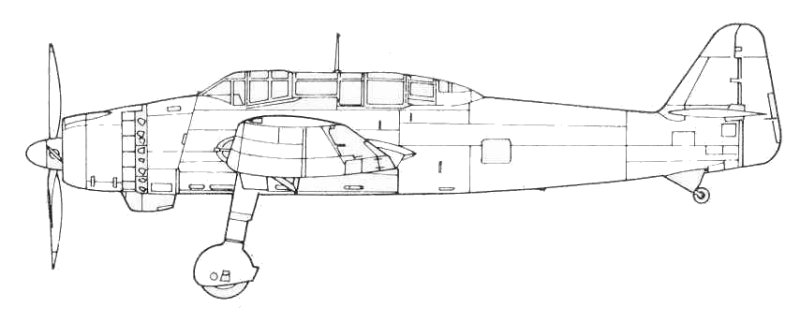
The Aichi B7A2 was exceptionally large for a Japanese carrier borne aircraft. It was built to a 16-Shi specification prepared by the Japanese Navy. The specification called for a carrier borne attack bomber to supplement and eventually replace both the Nakajima B6N and the Yokosuka D4Y. As the aircraft was intended to be operated from a new class of carrier the traditional restriction on aircraft length was waived. To meet the payload and speed requirements the Nakajima Homare eighteen cylinder engine was chose. A mid wing configuration was chose to provide space in the fuselage for a ventral bomb bay. This combined with the need to provide clearance for the large diameter four blade propeller made it necessary to select an inverted gull wing to reduce the length of the main landing gear.
The
first prototype was completed in May of 1942. As the aircraft
was
powered the still experimental 1800 hp Homare 11 engine the
flight test
program was constantly interrupted by engine teething
problems, but
when it performed smoothly it demonstrated excellent
performance. A
total of nine B7A1's were built and were progressively
modified to
eradicate minor air frame and equipment problems. In April of
1944 an
improved engine version, the 1,825 hp Homare 12 became
available and
powered by this engine the aircraft was placed into
production.
Production was slow in gaining tempo despite being easier to
build than
the D4y Judy that Aichi had been building for many years.
Production
was
finally brought to a stand still when the plant producing them
was
destroyed by an earthquake in May of 1945. This however had no
affect
on the outcome of the war as the Japanese Navy no longer had a
carrier
fleet and the small number of B7A2s built saw limited service
from land
bases.
The Kit
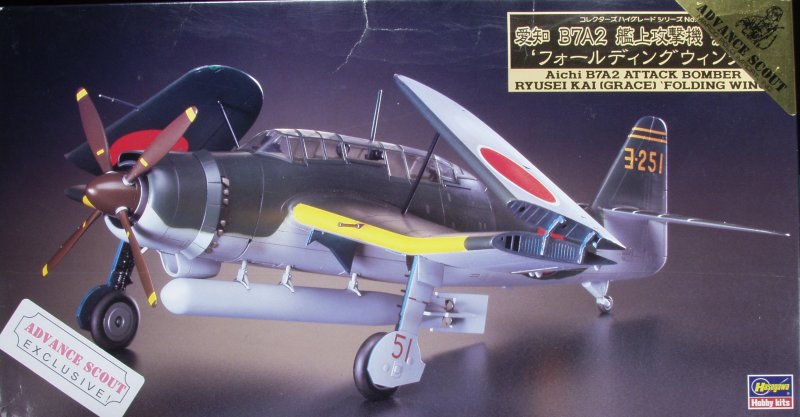
The
Hasegawa kit comes in a sturdy top open two part
box which in an
unusual case for Hasegawa features a photo of the
model on the top of
the box. Inside the box everything except the
clear parts was contained
in one large bag. Never my favorite way of packing
as it usually leads
to parts getting scuff marks during shipping. The
parts are molded in a
gray color and feature recessed panel lines and
rivet detail with
raised detail where applicable. The panel lines
are fine and uniform.
The control surfaces are all fixed in the neutral
position and the
fabric detail on ailerons and tail surfaces are
all very subtle, much
better than the norm for these. The surface finish
is smooth and I
found no surface defects on the air frame parts.
The interior is very well detailed and should satisfy all but those with AMS. The interior is marred by ejector pin marks on both of the interior side walls. These are very light and probably could be ignored as they won't be all that noticeable once things are closed up. Ejector pin marks also show up in the usual Hasegawa trademark places such as inside the gear doors, bomb bay doors (which are not used on this particular release as it is equipped with an external torpedo) and on one side of the landing gear struts. The engine is a one piece molding which should be adequate given the deep tight fitting cowl. Open or closed cowl flaps are provided. The main gear wheels are weighted. The issue kit that I have has the option of folded wings. Since this was not designed into the original kit it requires some surgery on the part of the kit builder. Basically the wings need to be cut and photoetch parts used to fill the voids at the ends of the wing stubs. As part of the photoetch fret a saw is included to facilitate this operation. While certainly more work for those wanting to pose the model with folded wings, for those that don't it provides a much stronger wing assembly that that provided on the B6N2 kit. The kit includes a torpedo to mount under the fuselage. Altogether by my count there are 105 parts in gray. There are at least eight parts that won't be used and more if you chose not to fold the wings. See below.
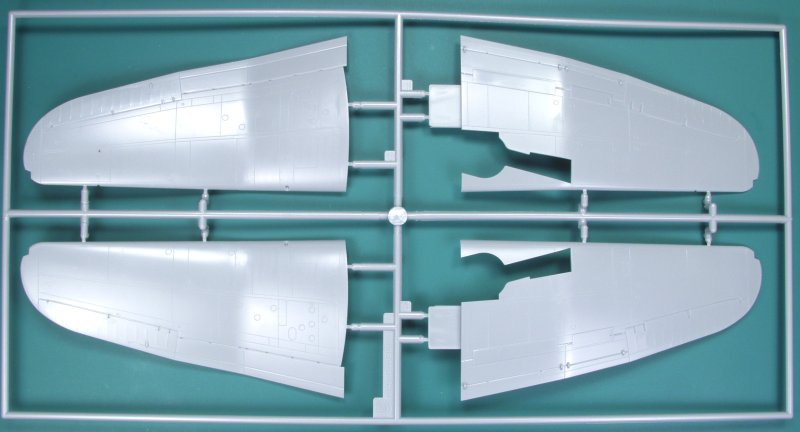
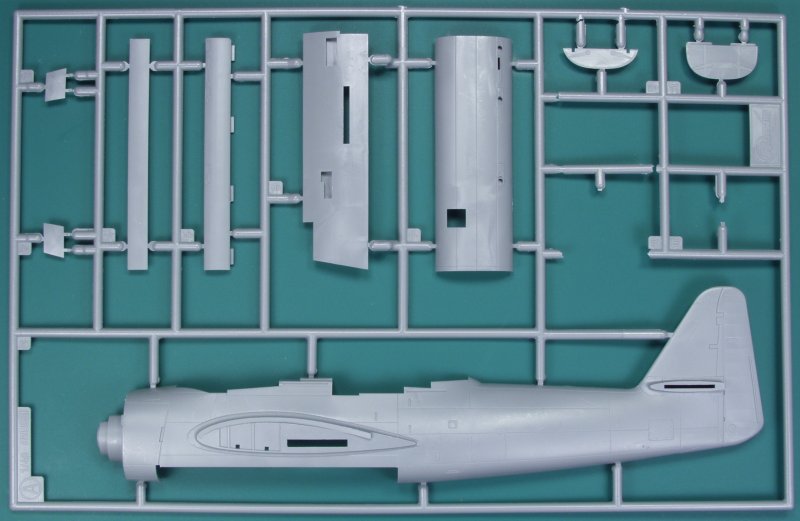
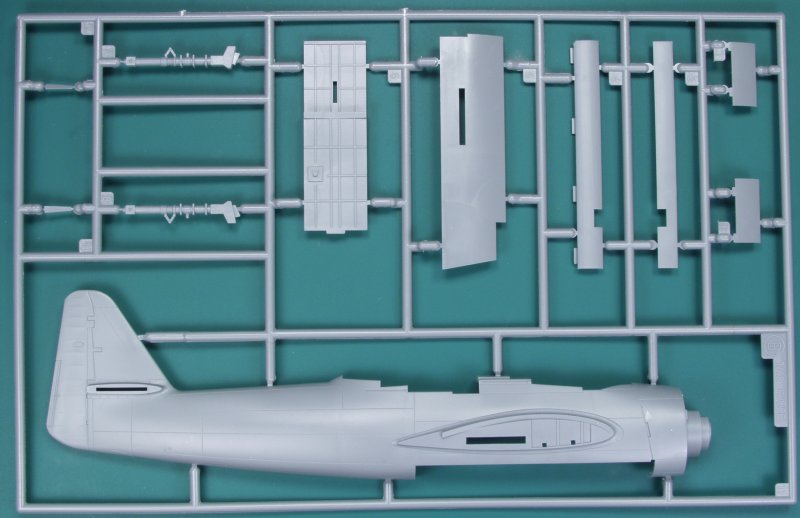
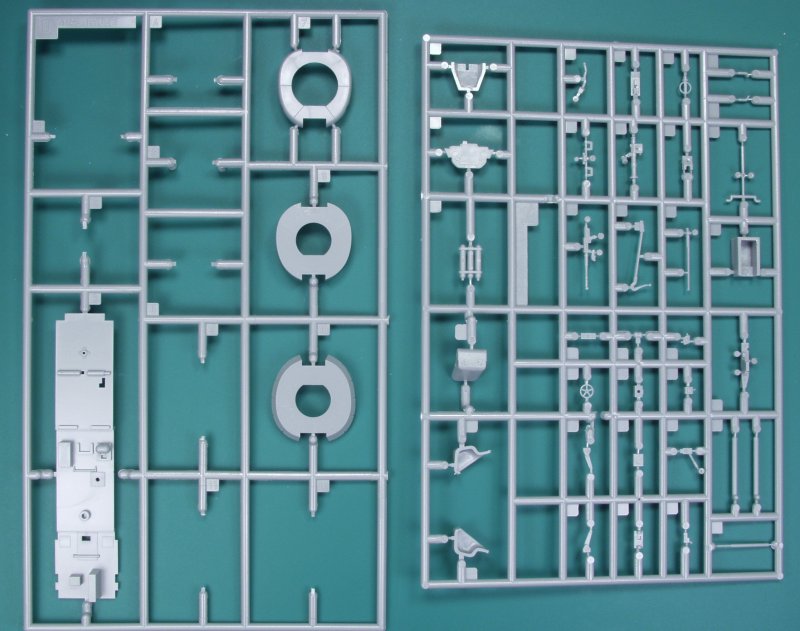
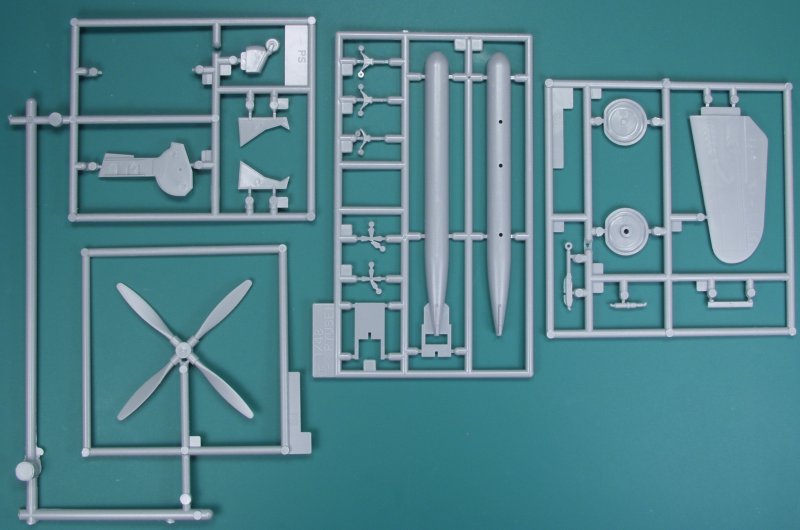
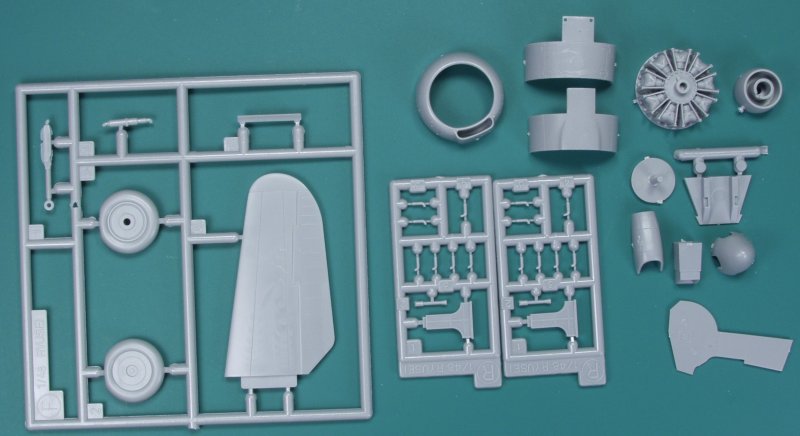
The kit includes a fret of photoetch to provide parts for the wings if cut off to make them folded and includes a saw to do the cutting. While they were at it, it would have been nice if they had provided a few small details for the cockpit and fins for the torpedo. See below
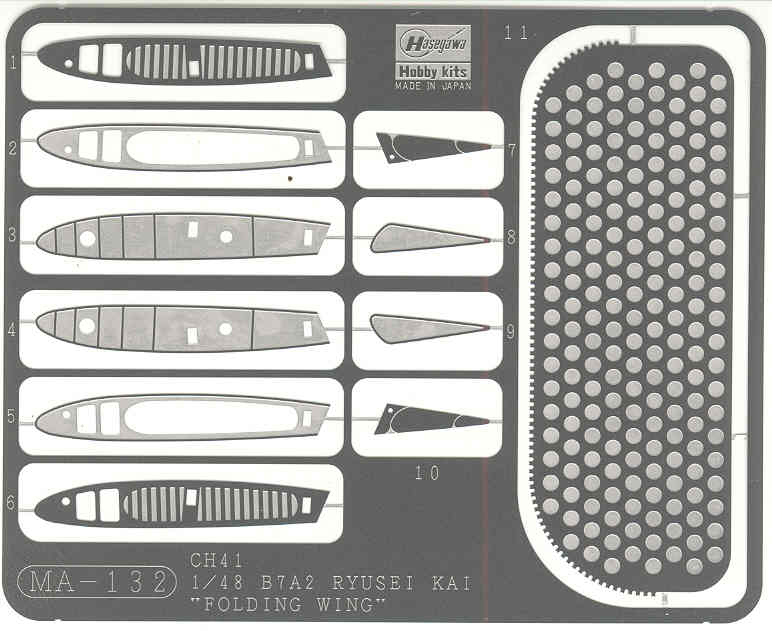
Although I did not photograph them there are six white metal parts supplied, four of these are wing fold hinges and the other two are props to keep the wings from folding too far when folded.
The clear parts are thin and clear and though provided as separate pieces I don't think they are designed to pose in the open position due to the thickness of the parts, at least that option is not shown in the instructions. All together there are 10 clear parts. See below.
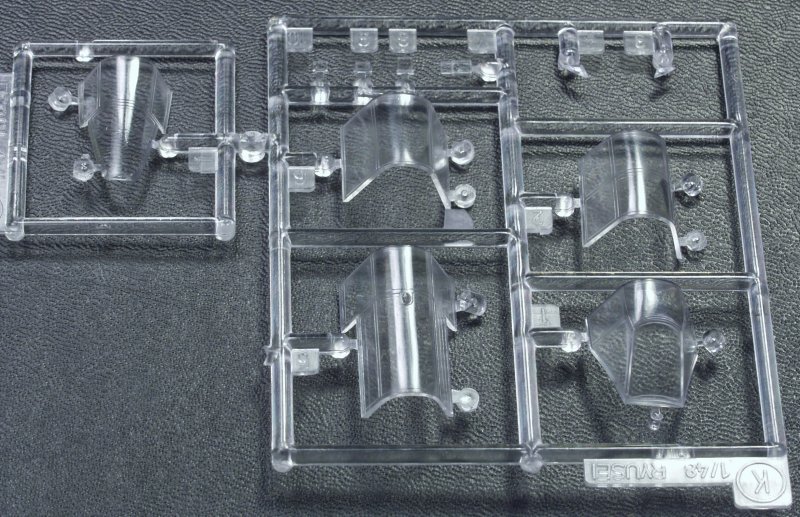
The decals appear reasonably thin and there is nothing to cause any registration issues as the white and green surrounds are created by stacking a red disk on a white or green disk. Not my preferred way but it does put the registration issue into your hands. There is a bit more clear material around most of the decals than I like to see so taking the time to trim them closely would probably save some grief when applying them. The sheet provides markings for three aircraft although two of them differ only in the tail number. See below.
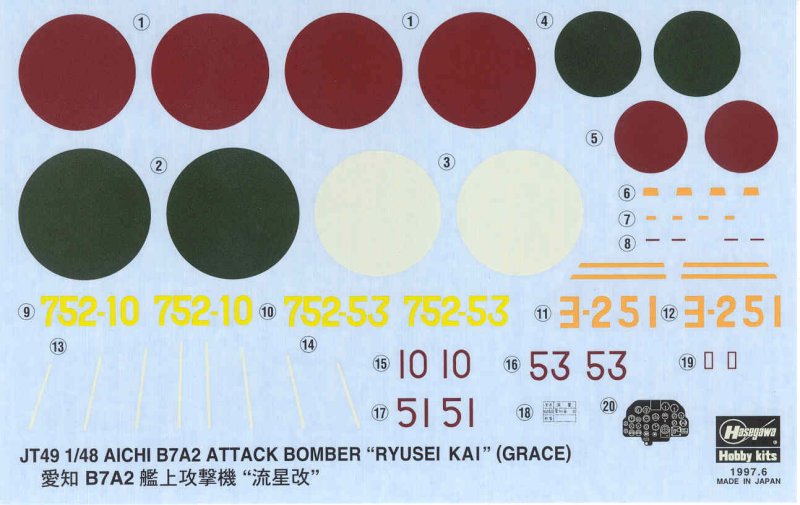
The instructions are provided on a wide format A4 height sheet folded to create eight panels. The first has history and specifications in Japanese and English, the next three have the assembly diagrams, panel five is a parts map and color chart, six and seven are painting and marking diagrams and eight has generic instructions for decals, PE, white metal part and the usual CYA safety warnings.
After Market Goodies
I have not acquire any for this although there are both photoetch [Eduard 48220]. I could not find a masking set for this kit. I think the interior is good enough as it is but with Japanese aircraft a masking set is always a time saver. Squadron [9592] makes a canopy set if you wish to pose it open
Conclusions
This is another well engineered and detailed kit from Hasegawa and should present no significant issues to modelers of all skill levels unless you wish to do the wing fold and in that case some experience doing aftermarket upgrades would be beneficial. Highly recommended.
Links to kit build or reviews
Build / reviews can be found here and here.
References
Japanese Aircraft of the Pacific War by R.J. Francillon
Back to the Misc Japanese Page